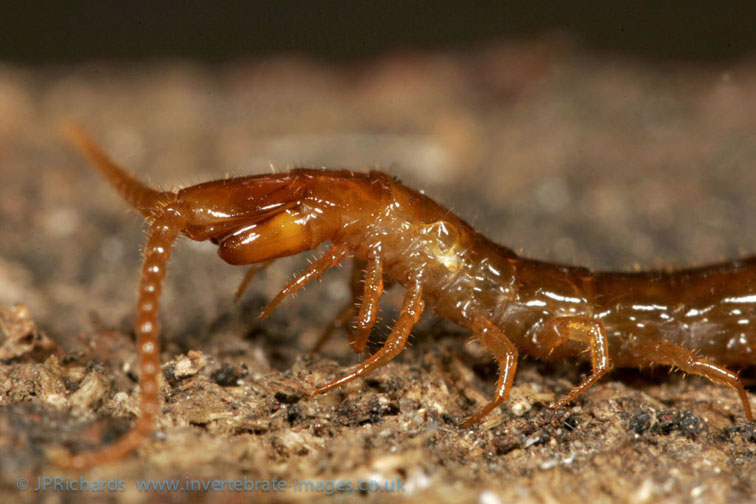Cryptops parisi Brolemann, 1920
Status:
- GB IUCN status: Not applicable (non-native)
- GB rarity status: Naturalised
ID Difficulty
Identification
The genus Cryptops is readily recognisable due to the presence of 21 leg pairs (all other British and Irish centipedes have 15 pairs or at least 35 pairs). However species identification is difficult.
Cryptops parisi is a relatively large centipede typically reaching more than 30 mm, but smaller specimens can be easily confused with the common C. hortensis. It is readily differentiated from this (and the larger C. anomalans) by the very closely spaced (often fused) saw teeth on the tibia and tarsus of the last legs.
More information to allow accurate identification is given in the published identification keys by Tony Barber (2008 & 2009).
Distribution
Cryptops parisi is most frequent across southern England and south Wales, but becomes increasingly scarce and coastal in northern England and Scotland. In Ireland it has only been recorded from sites in the southern most parts.
Habitat
It favours urban localities, being found in woodland, parks, gardens and churchyards, where it occurs under stones and dead wood and among leaf-litter.
This account is based on the 'Centipede Atlas' (Barber, 2022).
Links
ChiloBase 2.0 - World Catalogue of Centipedes: https://chilobase.biologia.unipd.it/searches/result_species/114








